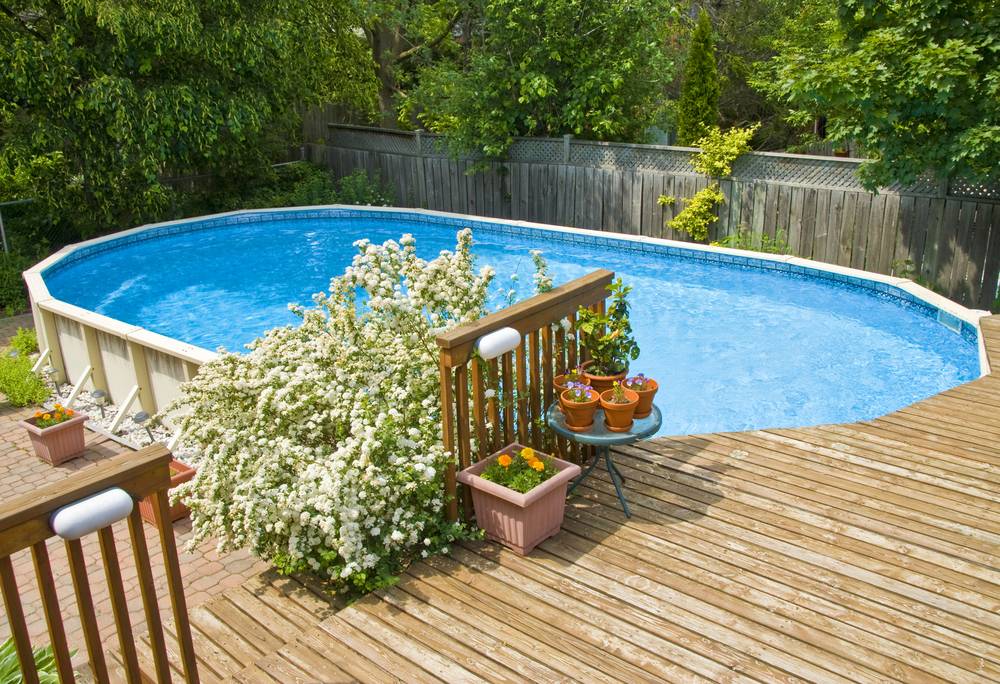- Aug 25, 2019
- 11
- Pool Size
- 15600
- Surface
- Plaster
- Chlorine
- Salt Water Generator
- SWG Type
- Pentair Intellichlor IC-40
I'm new to the TFP forums. I haven't had much trouble with my salt water pool since it was put in about 2 years ago. We typically use our pool fairly lightly. The SWG has easily kept chlorine in range, and the only thing I've really had to do regularly is add a little bit of acid once a week to keep the pH down in the normal range (the pH will tend to drift high if left unattended for too long....). Our city water here in AZ is quite hard though and, over the last year, we have seen a slow increase in the appearance of white scale on the waterline tiles.
We had some family visiting last week who like to use the pool, and we decided to fire up the pool heater in order to get the water temperature a bit more comfortable. The pool water now looks a little bit like a snow globe! (A bit of an exaggeration perhaps, but not by much....). Flakes of a soft white material accumulating in the corners of the pool & also floating around in the water. I tried to net out some of this stuff, but this has proven to be a very time-intensive & ineffective removal method due to the quantity of the flaky material. The filter doesn't seem to taking this material out, probably because the flakes tend to slowly sink to the bottom --- and if I try to sweep the flakes toward the main circulation intake on the bottom of the pool, the flakes just stir-up into suspension in the water again and then slowly settle out elsewhere. I'm assuming that this new flaky phenomenon was triggered by my heating up the pool water. I'm sure this isn't a unique problem, but it's not a problem that I'm familiar with. I'm wondering if something more subtle than just basic water chemistry has gotten out of balance, and is causing the issue.
So my question would be --- what's the best solution to my issue? My thought process tells me I should find some way to get this flaky material back into solution in the pool water, then drain some (or all?) of the water out of the pool, and then refill (& restore normal salt concentration & water chemistry) in order to dilute the concentration of the offending material, which would hopefully prevent the material from reappearing. But I'm not really sure how I would accomplish this in practice --- or whether this idea would actually be the proper approach to solving the problem. It may be that someone has previously addressed this issue somewhere in the forums, but I was unable to locate it, likely because I don't know the official terminology for this phenomenon. Help?
Pool: Built in 2019, in-ground, saltwater, 15,600 gal, no spa, pebble finish. Cleaning system: Blue Square Q360, in-floor.
Pentair Equipment: IntelliFlo VSF Pump (3 hp) / CCP-420 cartridge filter / IC-40 SWG / MasterTemp 400 NG heater / BioShield UV
Easy Touch 8 Controller with ScreenLogic wireless interface.
Water Testing: Hach Aquacheck 7-Way Test Strips.
We had some family visiting last week who like to use the pool, and we decided to fire up the pool heater in order to get the water temperature a bit more comfortable. The pool water now looks a little bit like a snow globe! (A bit of an exaggeration perhaps, but not by much....). Flakes of a soft white material accumulating in the corners of the pool & also floating around in the water. I tried to net out some of this stuff, but this has proven to be a very time-intensive & ineffective removal method due to the quantity of the flaky material. The filter doesn't seem to taking this material out, probably because the flakes tend to slowly sink to the bottom --- and if I try to sweep the flakes toward the main circulation intake on the bottom of the pool, the flakes just stir-up into suspension in the water again and then slowly settle out elsewhere. I'm assuming that this new flaky phenomenon was triggered by my heating up the pool water. I'm sure this isn't a unique problem, but it's not a problem that I'm familiar with. I'm wondering if something more subtle than just basic water chemistry has gotten out of balance, and is causing the issue.
So my question would be --- what's the best solution to my issue? My thought process tells me I should find some way to get this flaky material back into solution in the pool water, then drain some (or all?) of the water out of the pool, and then refill (& restore normal salt concentration & water chemistry) in order to dilute the concentration of the offending material, which would hopefully prevent the material from reappearing. But I'm not really sure how I would accomplish this in practice --- or whether this idea would actually be the proper approach to solving the problem. It may be that someone has previously addressed this issue somewhere in the forums, but I was unable to locate it, likely because I don't know the official terminology for this phenomenon. Help?
Pool: Built in 2019, in-ground, saltwater, 15,600 gal, no spa, pebble finish. Cleaning system: Blue Square Q360, in-floor.
Pentair Equipment: IntelliFlo VSF Pump (3 hp) / CCP-420 cartridge filter / IC-40 SWG / MasterTemp 400 NG heater / BioShield UV
Easy Touch 8 Controller with ScreenLogic wireless interface.
Water Testing: Hach Aquacheck 7-Way Test Strips.


